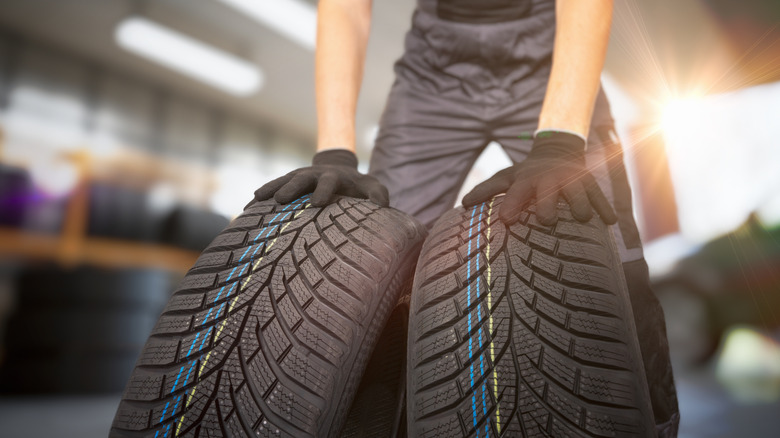Touring Vs. Performance Tires: What's The Difference?
When it comes to driving, few things can make or break your experience on the road quite as much as a good set of tires. But if you've been in the market for new tires of late, you know it can be difficult to figure out exactly what tires are best suited to your driving needs. That's largely because the major tire makers in the world are all manufacturing numerous classes of tires these days. That fact leaves consumers with a fair amount of research to conduct before outfitting their vehicle with a fresh set.
However, if you're currently driving a passenger car or sports car, the choices will, obviously, be a little more limited. You're likely not looking to outfit the vehicle with the sort of all-terrain tires better suited to off-road ready transports like trucks or SUVs. That is also assuming, of course, that you aren't looking to transform the vehicle into a monster truck, in which case you'd be eyeing one of the most expensive tire options in the world.
If you are looking to outfit a car with a new, normal set of rubbers, there are two notable options you're likely to come across, in touring tires and performance tires. While they may initially seem strikingly similar in design, the tire classes are quite different, with the primary point of diversion being the tread patterns. And yes, there's a reason their treads are so different.
Touring and performance tires are designed for different types of cars
It may seem a bit obvious given the names bestowed upon touring tires and performance tires, but the variation in tread pattern is because the tires are designed to deliver different driving experiences. They are essentially designed for different styles of vehicle too, with touring tires better suited to sedans, smaller SUVs, or passenger vehicles, and performance tires meant more for sports cars, coupes, and other more exotic makes. You can, however, swap the tires between various makes and models, as each class is available in sizes suitable for either.
You should not choose between the two styles of tire blindly, though, as you're essentially making a choice between a comfortable, quieter ride, or a handling-first experience that'll ensure you can deftly attack any curve on the road ahead. Touring tires like the well-regarded Bridgestone Turanza Prestige provide the first option, hence their suitability for sedans and family vehicles. The balanced, quiet ride is the result of a wider tread pattern, which allows touring tires to make better contact with the road. The design also provides solid all-season traction and may result in an extended tread life, based on your driving habits.
As for performance tires, they tend to boast larger circumferential and lateral grooves in the tread pattern, which, along with denser siping delivers enhanced traction and a higher speed rating. While they're meant to produce superior handling and performance at higher speeds, the control comes at a cost, as performance tires generally deliver depleted gas mileage, increased road noise, and reduced lifespan.

